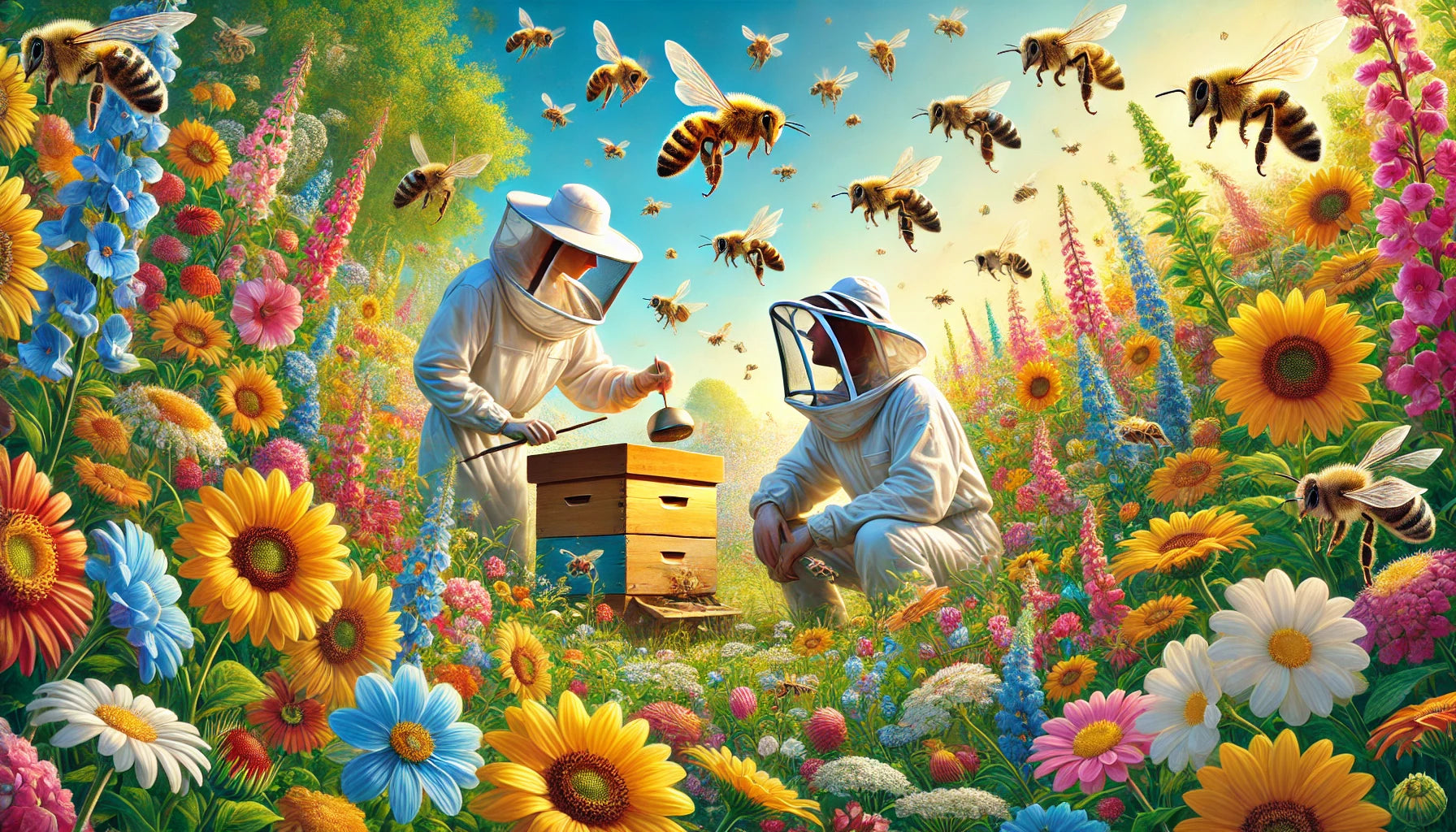If you’ve set up a new hive only to find that your bees absconded, it can feel like a huge setback. Absconding, when the entire colony leaves the hive, is distinct from swarming and often indicates that something in the environment or hive conditions wasn’t quite right. With insights from two beekeepers who have closely observed absconding, we’ll explore why bees might leave, how to create a more attractive hive, and steps to help prevent absconding.
What Causes Bees to Abscond?
Absconding is often a response to discomfort, where bees abandon the hive altogether, taking the queen with them. This behavior can be triggered by several factors, from hive conditions to environmental stressors.
For instance, a lack of food sources can prompt bees to look elsewhere, while pest invasions, like small hive beetles, often lead to entire colonies leaving. Poor hive ventilation, excessive moisture, or even disturbances like loud noises can also contribute to bees feeling insecure in their hive.
Observing Pre-Absconding Bee Behavior
Experienced beekeepers often notice specific behaviors in bees before they abscond. By watching for these signs, you may be able to make timely adjustments and avoid losing your colony.
One key indicator is reduced hive activity. Bees preparing to abscond may stop routine tasks like honey production and brood care. They may also cluster near the hive entrance or appear restless, indicating they’re uncomfortable. Noting these behaviors in a beekeeping journal can help you recognize patterns over time.
Preventing Bees from Absconding
Creating an inviting hive environment is essential to keep your bees happy and discourage absconding. Here are several methods you can use:
- Proper Ventilation: Bees need a well-ventilated hive, especially in hot or humid weather. Ensuring that your hive is designed with ventilation gaps can keep bees comfortable.
- Access to Water: Place a nearby water source for bees to use in cooling the hive and caring for their brood.
- Bee Trap Attractants: Adding a bee trap attractant can help deter pests and keep the hive environment stable.
By meeting these needs, you make the hive a more attractive, long-term home for your bees.
Insights from Two Beekeepers on Absconding
The two beekeepers we consulted observed that consistent hive conditions are crucial to keeping bees settled. One beekeeper emphasized routine inspections to identify potential issues like mold, pests, or poor ventilation early on, allowing for prompt fixes. Another noted that environmental factors, like nearby nectar sources and stable weather, also play a big role in whether bees stay or leave.
Through years of observation, they’ve found that keeping bees calm and undisturbed, particularly during periods of environmental stress, significantly reduces the chance of absconding.
A Checklist for Keeping Bees in Place
To retain your bees, focus on the essentials:
- Ensure Queen Presence: A strong queen is vital to the colony's stability.
- Prevent Pests: Use beetle traps for beehives to keep small hive beetles and other pests from invading.
- Set Up in Flower-Rich Areas: Bees stay closer to hives with abundant nectar sources nearby.
- Control Moisture Levels: High humidity in the hive can make bees uncomfortable. Use moisture boards or other methods to keep the hive dry.
How the Life Cycle of Bees Relates to Absconding
The life cycle of bees also plays a part in absconding behavior. When bees have less brood (young bees) to care for, they’re more likely to leave a hive that isn’t meeting their needs. Timing your hive setup to the bees’ natural brood cycle can help anchor them to the hive during critical periods when they’re caring for new larvae, thus reducing the risk of absconding.
The Role of Honey Bees in Agriculture
While absconding can be frustrating, bees are essential to the ecosystem, particularly for pollination. Honey bees are vital to agriculture, as they pollinate a range of crops, supporting both biodiversity and food production. Keeping bees in a well-maintained hive contributes to a healthy bee population, benefiting both local agriculture and the environment.
Enhance Hive Management with Swarm Commander
Absconding bees can be a challenge, but with the right knowledge, you can create a hive that encourages your bees to stay. Observing the signs, learning from two beekeepers’ experiences, and making adjustments to your hive setup can help you maintain a strong, stable colony. With careful attention to hive conditions and preventive steps, you can reduce the chances of losing your bees.
If you’re looking for ways to improve hive stability and manage bee behavior, consider Swarm Commander to help create a welcoming environment for your bees. This tool can make a big difference in guiding your bees and preventing them from absconding.
Frequently Asked Questions About Absconding Bees
Q1. How can I tell if my bees are preparing to abscond?
Watch for reduced hive activity, clustering near the entrance, or minimal brood care, which often indicates discomfort.
Q2. Can I stop bees from absconding once they’ve started?
If they’re in the early stages, reducing hive stress and improving conditions can sometimes encourage them to stay, but it’s challenging once they’re fully committed to leaving.
Q3. What natural methods can I use to prevent pest invasions?
In addition to beetle traps for beehives, using peppermint oil near the entrance can deter some pests without disturbing your bees.
Q4. How often should I check my hive to avoid absconding?
Inspecting every two weeks helps catch any emerging issues early, like mold or pests, keeping the hive environment stable.
Q5. Is absconding common in newly installed hives?
Yes, new hives are more prone to absconding as bees settle in. Making the hive comfortable and monitoring conditions can help new colonies stay longer.



